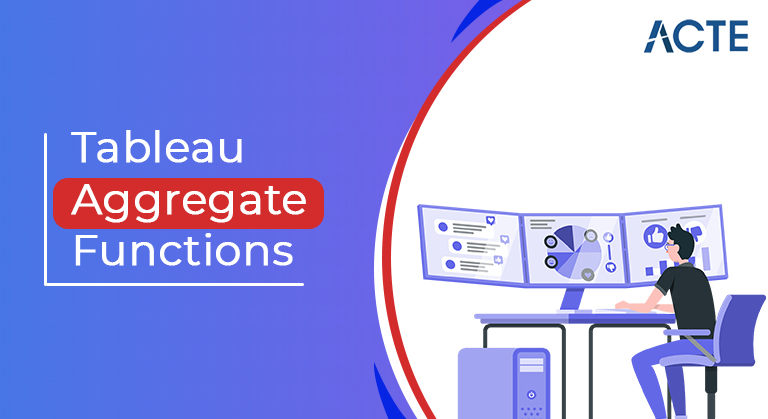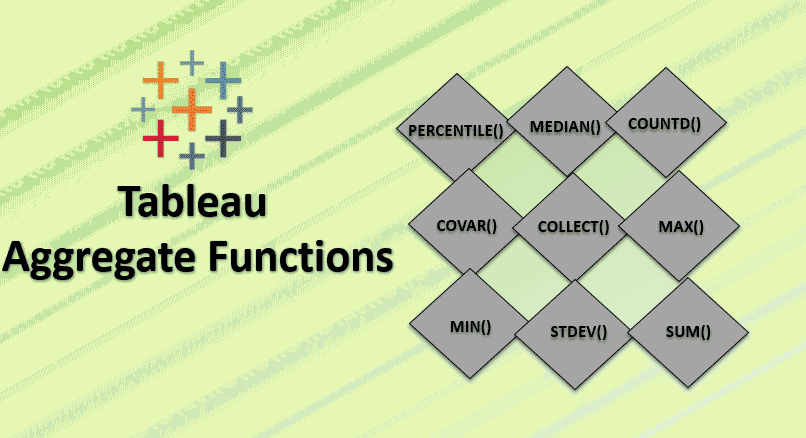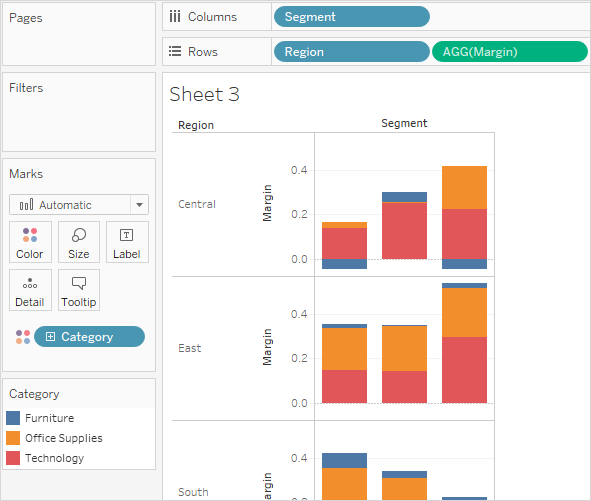
Aggregate Functions are a type of function where values of multiple rows are grouped together as the input to form a single value of more significant meaning, such as a set or list.
- Introduction to Tableau Aggregate Functions
- Aggregate Functions
- How does Aggregate Function Work in Tableau?
- Conclusion
- Number Functions.
- String Functions.
- Date Functions.
- Type Conversion Functions.
- Aggregate Functions.
- Logical Functions.
- From the above, we’ll see extra element approximately Aggregate Functions that’s maximum typically using.
Introduction to Tableau Aggregate Functions :-

Tableau isn’t only a device that makes graphs and reports, the top of the line the facts illustration we do want the Functions in Tableau. By getting access to this feature simply click on the pick combination from the column drop-down listing to make the Create Calculated Field. Below are a number of the Tableau Aggregate Functions listing:-
Aggregate Functions :-
Aggregate features are integrated features that let you summarize or alternate the granularity of your information. Following are the diverse Aggregate features in Tableau:-
AVG:
Average features go back the suggest of all values in expression and may be used with numeric fields handiest.
ATTR:
The features handiest go back the unmarried fee for the calculated row and the NULL values may be ignored. If the circumstance isn’t always meet, it’s going to go back the asterisk fee.
COLLECT:
COLLECT feature may be used for spatial fields. It will integrate the values withinside the argument fields and NULL values may be ignored.
CORR:
CORR stands for correlation among the 2 supply expressions. When we need to correlate among the 2 variables, it is able to go back 3 values 1, zero and -1. The values 1 represents the high-quality changes, zero represents no dating and -1 represents the bad alternate.
COUNT:
It will go back the range of values gift withinside the decided on column and NULL values can’t be counted. Take the nice instance for this feature, creating a pivot desk in excel through be counted number the values-primarily based totally category.
COUNTD:
It will go back the wonderful be counted number for the given column or a set and it’s going to now no longer go back a NULL fee. These features can be the use of the supply of MS excel or textual content or Access.
COVAR:
COVER stands for covariance for the given expressions. The high-quality covariance shows the variable is shifting in the direction of withinside the proper path and we may be observed withinside the trend. The information may be taken into consideration as a random sample.
COVARP:
This feature is much like covariance however it handiest biased with the population.
MAX:
The MAX features go back the most values for the given expression. Suppose we should see the most age withinside the given voter list. We may want to follow this feature to look it.
MEDIAN:
It will go back the numeric values with the median of a unmarried expression. It will go back the center fee for the given expression it’s going to forget about the NULL values.
- Open a brand new workbook in tableau computer and join the facts reassets the use of the .xls document dataset. Here the dataset we will use any save income document and calculate the common income on weekdays. We can genuinely locate the common of income via way of means of drag and drop the date into row area after which make income withinside the 2nd column as common (AVG), like below.
- The trouble via way of means of making AVG calculations in Tableau is primarily based totally on every incidence of the income. But while we appearance deeper into the facts, every income having more than one no. of order and special merchandise. The pattern determine has been proven below.
- Here we truly recognize the calculation made via way of means of the sum of income and created an common. The Tableau mechanically takes as SUM (Sales) / COUNT (Sales). Where we want to customise it to make the common for in step with day or weekdays, how will we make this? Yes, we want to apply the calculated area to have AVG aggregation as SUM (Sales).
- First, we want to create the day by day income general after which use this as a base to locate the common income for an afternoon or weekdays. Then we will visit the worksheet to feature this calculated area into the visualization. Add the clear out out to make a weekday and alternate the aggregation to AVG. Now we see the distinction among how the Tableau default common values display and the way the mixture AVG value. The first weekday having best one sale incidence, tomorrow suggests the clean variations which having more than one orders with more than one merchandise withinside the identical income.
How does Aggregate Function Work in Tableau?

In detail, we’ll see a way to use those capabilities in Tableau:-
Conclusion :-
Now on this article, we’ve discovered what is ready Tableau features and its types, Aggregate Function with an example, a way to use the combination feature in Tableau desktop. Happy analysis!





